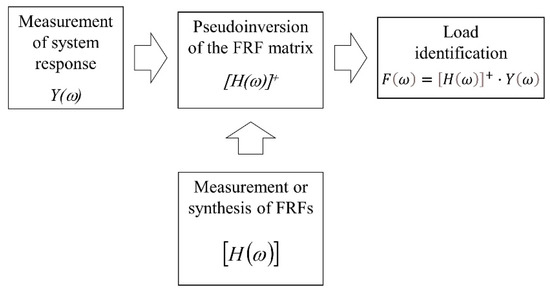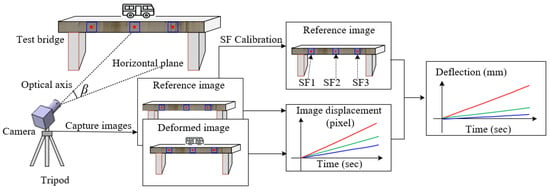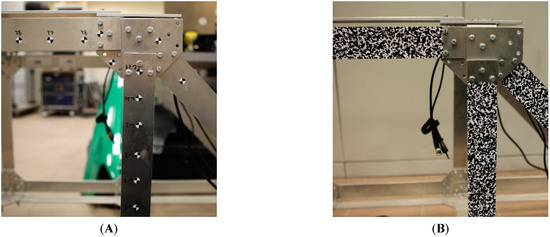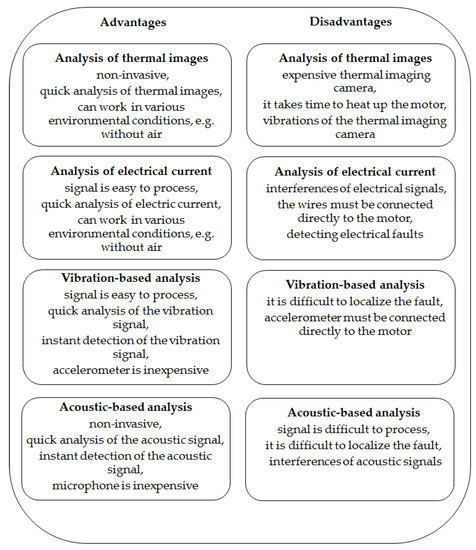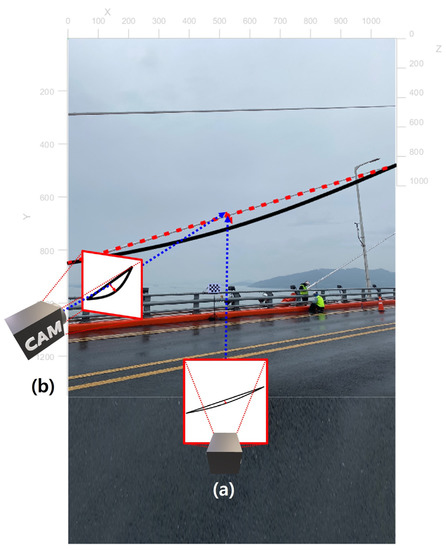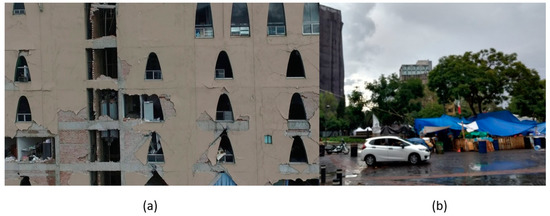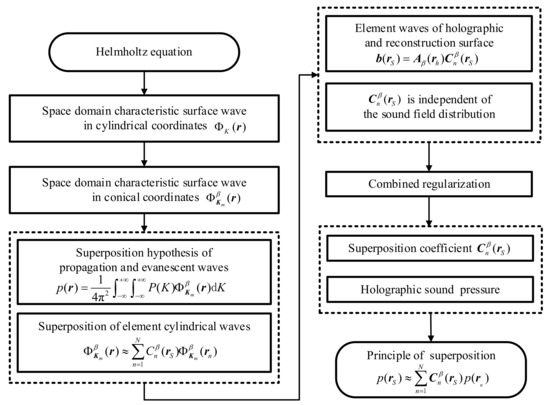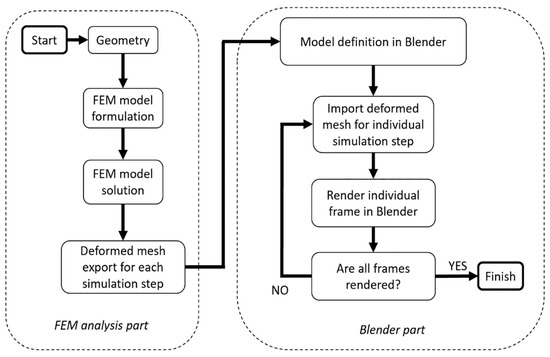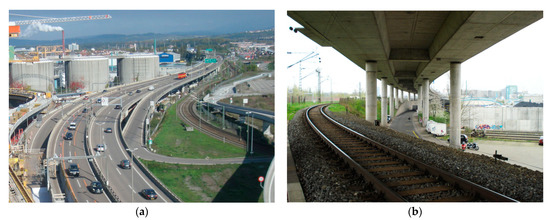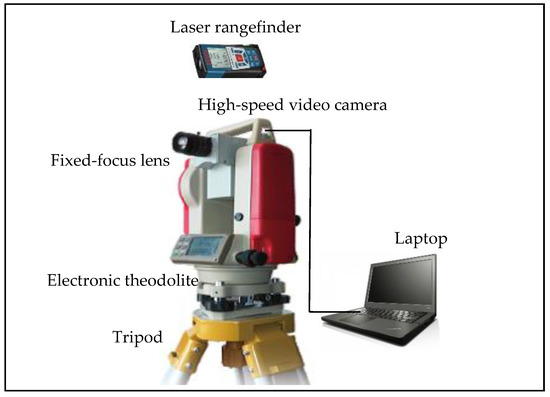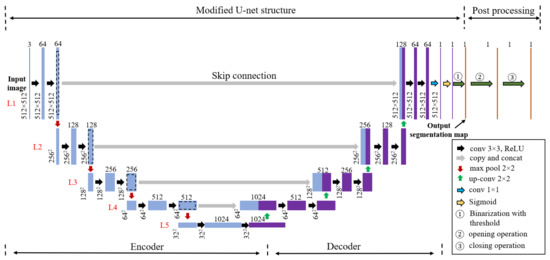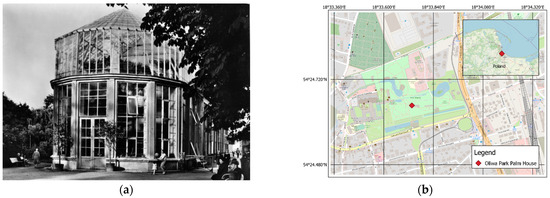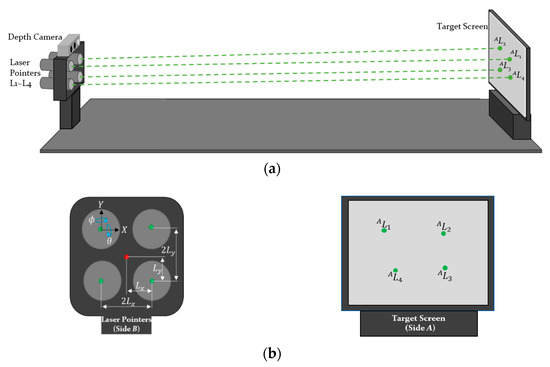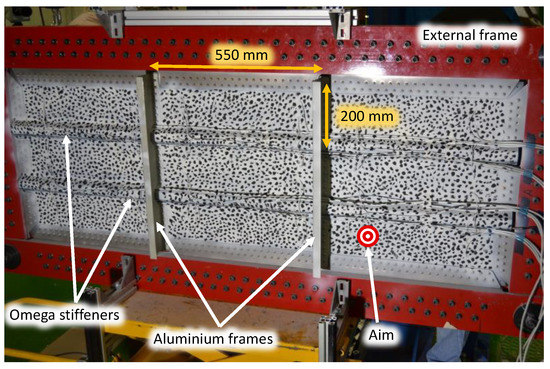Vision Sensors and Systems in Structural Health Monitoring
Share This Topical Collection
Editors
 Prof. Dr. Piotr Kohut
Prof. Dr. Piotr Kohut
 Prof. Dr. Piotr Kohut
Prof. Dr. Piotr Kohut
E-Mail
Website
Collection Editor
Department of Robotics and Mechatronics, Faculty of Mechanical Engineering and Robotics, AGH University of Science and Technology, 30-059 Krakow, Poland
Interests: vision systems; digital image processing; image-based measurements; 3D object reconstruction; motion analysis; medical image analysis
 Dr. Alessandro Sabato
Dr. Alessandro Sabato
 Dr. Alessandro Sabato
Dr. Alessandro Sabato
E-Mail
Website
Collection Editor
Department of Mechanical and Industrial Engineering, University of Massachusetts Lowell, Lowell, MA 01852, USA
Interests: artificial intelligence; computer vision; drone-borne inspection; non-destructive evaluations (NDE); structural health monitoring (SHM); sensors; smart structures
Special Issues, Collections and Topics in MDPI journals
 Prof. Dr. Adam Martowicz
Prof. Dr. Adam Martowicz
 Prof. Dr. Adam Martowicz
Prof. Dr. Adam Martowicz
E-Mail
Website
Collection Editor
Department of Robotics and Mechatronics, Faculty of Mechanical Engineering and Robotics, AGH University of Science and Technology, 30-059 Krakow, Poland
Interests: SHM; numerical dispersion; peridynamics; MEMS; smart structures; SMA
 Dr. Krzysztof Holak
Dr. Krzysztof Holak
 Dr. Krzysztof Holak
Dr. Krzysztof Holak
E-Mail
Website
Collection Editor
Department of Robotics and Mechatronics, Faculty of Mechanical Engineering and Robotics, AGH University of Science and Technology, 30-059 Krakow, Poland
Interests: computer vision; image and video processing; 3D vision; vision-based NDTE and SHM; robot vision
Topical Collection Information
Dear Colleagues,
In recent years, the growth in structural health monitoring (SHM) and non-destructive testing and evaluation (NDTE) technology has been acknowlaged. Most solutions available in the market today make use of contact-based sensors. However, this approach is limited. Available methods produce results at only a discrete number of points, are expensive, and interfere with the structural response of tested objects. To address all the limitations of current technology, the research community has been actively exploring non-contact measurement methods. Recent advances in camera technology, optical sensors, and image-processing algorithms have made computer vision a viable option. Vision systems allow remote inspection while not interfering with the structure’s operations and permit high density of measurements points. This Topical Collection explores theoretical and experimental advances in optical sensors, computer vision, image processing and analysis for SHM and NDTE. We invite researchers to contribute original research, case studies, industrial applications and review articles over the current state-of-the-art.
Prof. Dr. Piotr Kohut
Dr. Alessandro Sabato
Prof. Dr. Adam Martowicz
Dr. Krzysztof Holak
Collection Editors
Manuscript Submission Information
Manuscripts should be submitted online at www.mdpi.com by registering and logging in to this website. Once you are registered, click here to go to the submission form. Manuscripts can be submitted until the deadline. All submissions that pass pre-check are peer-reviewed. Accepted papers will be published continuously in the journal (as soon as accepted) and will be listed together on the collection website. Research articles, review articles as well as short communications are invited. For planned papers, a title and short abstract (about 100 words) can be sent to the Editorial Office for announcement on this website.
Submitted manuscripts should not have been published previously, nor be under consideration for publication elsewhere (except conference proceedings papers). All manuscripts are thoroughly refereed through a single-blind peer-review process. A guide for authors and other relevant information for submission of manuscripts is available on the Instructions for Authors page. Sensors is an international peer-reviewed open access semimonthly journal published by MDPI.
Please visit the Instructions for Authors page before submitting a manuscript.
The Article Processing Charge (APC) for publication in this open access journal is 2600 CHF (Swiss Francs).
Submitted papers should be well formatted and use good English. Authors may use MDPI's
English editing service prior to publication or during author revisions.
Keywords
- Computer vision
- Image and video processing
- Photogrammetry-based structure reconstruction
- Thermal and hyperspectral imaging
- Non-contact civil infrastructure inspection
- UAV-based inspection
- Vision-based SHM, NDT, and modal analysis
- Machine learning for computer vision SHM and NDT
- Sensing uncertainty and reliability
- Remote sensing
Published Papers (18 papers)
Open AccessArticle
Force Identification Based on Response Signals Captured with High-Speed Three-Dimensional Digital Image Correlation
by
Krzysztof Mendrok, Ángel J. Molina-Viedma, Elias López-Alba, Francisco A. Díaz Garrido and Lukasz Pieczonka
Cited by 1 | Viewed by 1977
Abstract
Structural Health Monitoring (SHM) systems allow three types of diagnostic tasks to be performed, namely damage identification, loads monitoring, and damage prognosis. Only if all three tasks are correctly fulfilled can the useful remaining life of a structure be estimated credibly. This paper
[...] Read more.
Structural Health Monitoring (SHM) systems allow three types of diagnostic tasks to be performed, namely damage identification, loads monitoring, and damage prognosis. Only if all three tasks are correctly fulfilled can the useful remaining life of a structure be estimated credibly. This paper deals with the second task and aimed to extend state-of-the-art in load identification, by demonstrating that it is feasible to achieve it through the analysis of response signals captured with high-speed three-dimensional Digital Image Correlation (HS 3D-DIC). The efficacy of the proposed procedure is demonstrated experimentally on a frame structure under broadband vibration excitation. Full-field vibration displacement signals are captured with the use of two high-speed cameras and processed with 3D-DIC. Loads are identified with two different algorithms based on inverting the Frequency Response Function (FRF) matrix and modal filtration (MF). The paper discusses both methods providing their theoretical background and experimental performance.
Full article
►▼
Show Figures
Open AccessArticle
Generalized Scale Factor Calibration Method for an Off-Axis Digital Image Correlation-Based Video Deflectometer
by
Long Tian, Tong Ding and Bing Pan
Cited by 6 | Viewed by 2168
Abstract
When using off-axis digital image correlation (DIC) for non-contact, remote, and multipoint deflection monitoring of engineering structures, accurate calibration of the scale factor (SF), which converts image displacement to physical displacement for each measurement point, is critical to realize high-quality displacement measurement. In
[...] Read more.
When using off-axis digital image correlation (DIC) for non-contact, remote, and multipoint deflection monitoring of engineering structures, accurate calibration of the scale factor (SF), which converts image displacement to physical displacement for each measurement point, is critical to realize high-quality displacement measurement. In this work, based on the distortion-free pinhole imaging model, a generalized SF calibration model is proposed for an off-axis DIC-based video deflectometer. Then, the transversal relationship between the proposed SF calibration method and three commonly used SF calibration methods was discussed. The accuracy of these SF calibration methods was also compared using indoor rigid body translation experiments. It is proved that the proposed method can be degraded to one of the existing calibration methods in most cases, but will provide more accurate results under the following four conditions: (1) the camera’s pitch angle is more than 20°, (2) the focal length is more than 25 mm, (3) the pixel size of the camera sensor is more than 5 um, and (4) the image y-coordinate corresponding to the measurement point after deformation is far from the image center.
Full article
►▼
Show Figures
Open AccessArticle
The Simulation-Based Approach for Random Speckle Pattern Representation in Synthetically Generated Video Sequences of Dynamic Phenomena
by
Paweł Zdziebko, Ziemowit Dworakowski and Krzysztof Holak
Cited by 1 | Viewed by 2857
Abstract
Structural health monitoring systems that employ vision data are under constant development. Generating synthetic vision data is an actual issue. It allows, for example, for obtention of additional data for machine learning techniques or predicting the result of observations using a vision system
[...] Read more.
Structural health monitoring systems that employ vision data are under constant development. Generating synthetic vision data is an actual issue. It allows, for example, for obtention of additional data for machine learning techniques or predicting the result of observations using a vision system with a reduced number of experiments. A random speckle pattern (RSP) fixed on the surface of the observed structure is usually used in measurements. The determination of displacements of its areas using digital image correlation (DIC) methods allows for extracting the structure’s deformation in both static and dynamic cases. An RSP modeling methodology for synthetic image generation is developed within this paper. The proposed approach combines the finite element modeling technique and simulation results with the Blender graphics environment to generate video sequences of the mechanical structure with deformable RSP attached to it. The comparative analysis showed high compliance of the displacement between the synthetic images processed with the DIC method and numerical data.
Full article
►▼
Show Figures
Open AccessArticle
Thermographic Fault Diagnosis of Shaft of BLDC Motor
by
Adam Glowacz
Cited by 93 | Viewed by 4500
Abstract
A technique of thermographic fault diagnosis of the shaft of a BLDC (Brushless Direct Current Electric) motor is presented in this article. The technique works for the shivering of the thermal imaging camera in the range of 0–1.5 [m/s
2]. An electric
[...] Read more.
A technique of thermographic fault diagnosis of the shaft of a BLDC (Brushless Direct Current Electric) motor is presented in this article. The technique works for the shivering of the thermal imaging camera in the range of 0–1.5 [m/s
2]. An electric shaver was used as the source of the BLDC motor. The following states of the BLDC motor were analyzed: Healthy BLDC motor (HB), BLDC motor with one faulty shaft (1FSB), BLDC motor with two faulty shafts (2FSB), and BLDC motor with three faulty shafts (3FSB). A new method of feature extraction named PNID (power of normalized image difference) was presented. Deep neural networks were used for the analysis of thermal images of the faulty shaft of the BLDC motor: GoogLeNet, ResNet50, and EfficientNet-b0. The results of the proposed technique were very good. PNID, GoogLeNet, ResNet50, and EfficientNet-b0 have an efficiency of recognition equal to 100% for four classes.
Full article
►▼
Show Figures
Open AccessArticle
Vision-Based Cable Displacement Measurement Using Side View Video
by
Geonhee Lee, Sunjoong Kim, Sangsub Ahn, Ho-Kyung Kim and Hyungchul Yoon
Cited by 33 | Viewed by 4316
Abstract
Recent tragedies around the world have shown how accidents in the cable-stayed bridges can wreak havoc on the society. To ensure the safety of the cable-stayed bridges, several studies have estimated the cable tension force using the vibration of cables. Most of these
[...] Read more.
Recent tragedies around the world have shown how accidents in the cable-stayed bridges can wreak havoc on the society. To ensure the safety of the cable-stayed bridges, several studies have estimated the cable tension force using the vibration of cables. Most of these methods for estimating the tension of a cable start with measuring the displacement of the cable. Recent development of commercial cameras provide opportunity for more convenient and efficient method for measuring the displacement of cable. However, traditional vision-based displacement measurement methods require the assumption that the movement of the cable should be measured in parallel to the camera plane. This assumption limits the installation location of the camera when measuring the displacement of a cable. Therefore, this study introduces a new vision-based cable displacement measurement system that can measure the displacement of a cable in various locations even when the camera is installed in the side of the cable. The proposed method consists of three phases: (1) camera projection matrix estimation, (2) cable tracking in the image coordinate, and (3) cable displacement estimation in the world coordinate. To validate the performance of the proposed method, a simulation-based validation test, a lab-scale validation test, and an on-site validation test were conducted. The simulation-based validation test verified the performance of the proposed method in an ideal condition, and the lab-scale validation test showed the performance of the method in physical environment. Finally, the on-site validation test showed that the proposed method can measure the cable displacement with a side view camera.
Full article
►▼
Show Figures
Open AccessArticle
Physics-Based Graphics Models in 3D Synthetic Environments as Autonomous Vision-Based Inspection Testbeds
by
Vedhus Hoskere, Yasutaka Narazaki and Billie F. Spencer, Jr.
Cited by 57 | Viewed by 4882
Abstract
Manual visual inspection of civil infrastructure is high-risk, subjective, and time-consuming. The success of deep learning and the proliferation of low-cost consumer robots has spurred rapid growth in research and application of autonomous inspections. The major components of autonomous inspection include data acquisition,
[...] Read more.
Manual visual inspection of civil infrastructure is high-risk, subjective, and time-consuming. The success of deep learning and the proliferation of low-cost consumer robots has spurred rapid growth in research and application of autonomous inspections. The major components of autonomous inspection include data acquisition, data processing, and decision making, which are usually studied independently. However, for robust real-world applicability, these three aspects of the overall process need to be addressed concurrently with end-to-end testing, incorporating scenarios such as variations in structure type, color, damage level, camera distance, view angle, lighting, etc. Developing real-world datasets that span all these scenarios is nearly impossible. In this paper, we propose a framework to create a virtual visual inspection testbed using 3D synthetic environments that can enable end-to-end testing of autonomous inspection strategies. To populate the 3D synthetic environment with virtual damaged buildings, we propose the use of a non-linear finite element model to inform the realistic and automated visual rendering of different damage types, the damage state, and the material textures of what are termed herein physics-based graphics models (PBGMs). To demonstrate the benefits of the autonomous inspection testbed, three experiments are conducted with models of earthquake damaged reinforced concrete buildings. First, we implement the proposed framework to generate a new large-scale annotated benchmark dataset for post-earthquake inspections of buildings termed QuakeCity. Second, we demonstrate the improved performance of deep learning models trained using the QuakeCity dataset for inference on real data. Finally, a comparison of deep learning-based damage state estimation for different data acquisition strategies is carried out. The results demonstrate the use of PBGMs as an effective testbed for the development and validation of strategies for autonomous vision-based inspections of civil infrastructure.
Full article
►▼
Show Figures
Open AccessArticle
Conical Statistical Optimal Near-Field Acoustic Holography with Combined Regularization
by
Wei Cheng, Jinglei Ni, Chao Song, Muhammad Mubashir Ahsan, Xuefeng Chen, Zelin Nie and Yilong Liu
Cited by 6 | Viewed by 2477
Abstract
For the sound field reconstruction of large conical surfaces, current statistical optimal near-field acoustic holography (SONAH) methods have relatively poor applicability and low accuracy. To overcome this problem, conical SONAH based on cylindrical SONAH is proposed in this paper. Firstly, elementary cylindrical waves
[...] Read more.
For the sound field reconstruction of large conical surfaces, current statistical optimal near-field acoustic holography (SONAH) methods have relatively poor applicability and low accuracy. To overcome this problem, conical SONAH based on cylindrical SONAH is proposed in this paper. Firstly, elementary cylindrical waves are transformed into those suitable for the radiated sound field of the conical surface through cylinder-cone coordinates transformation, which forms the matrix of characteristic elementary waves in the conical spatial domain. Secondly, the sound pressure is expressed as the superposition of those characteristic elementary waves, and the superposition coefficients are solved according to the principle of superposition of wave field. Finally, the reconstructed conical pressure is expressed as a linear superposition of the holographic conical pressure. Furthermore, to overcome ill-posed problems, a regularization method combining truncated singular value decomposition (TSVD) and Tikhonov regularization is proposed. Large singular values before the truncation point of TSVD are not processed and remaining small singular values representing high-frequency noise are modified by Tikhonov regularization. Numerical and experimental case studies are carried out to validate the effectiveness of the proposed conical SONAH and the combined regularization method, which can provide reliable evidence for noise monitoring and control of mechanical systems.
Full article
►▼
Show Figures
Open AccessArticle
Vision-Based Approach in Contact Modelling between the Footpad of the Lander and the Analogue Representing Surface of Phobos
by
Marek Cała, Piotr Kohut, Krzysztof Holak and Daniel Wałach
Cited by 1 | Viewed by 2365
Abstract
Identifying solar system surface properties of celestial bodies requires the conducting of many tests and experiments in conditions similar to those found on various objects. One of the first tasks to be solved by engineers is determining the contact condition between the lander
[...] Read more.
Identifying solar system surface properties of celestial bodies requires the conducting of many tests and experiments in conditions similar to those found on various objects. One of the first tasks to be solved by engineers is determining the contact condition between the lander and the surface of a given celestial body during landing in a microgravity environment. This paper presents the results of experimental studies and numerical simulations of the contact phenomenon between the lander foot model and the Phobos analogue. The main goal of the experimental tests was to obtain measured deformation data of the studied analogues using 2D and 3D vision systems, which were employed to analyze the behavior of the lander foot and the surface of the studied analogue itself and to calibrate the numerical models. The analogue representing the Phobos surface was foam concrete. The variable parameters in the study were the analogue thickness and the lander foot velocity at the time of contact. Tests were conducted for three different contact velocities of 1.2 m/s, 3.0 m/s, and 3.5 m/s. Taking into account the mass of the lander foot model, kinetic energies of 30.28 J, 189.22 J, and 257.56 J were obtained. The results showed that at low contact velocities, and thus low kinetic energies, no significant differences in behavior of the material directly under the lander foot were observed, and similar values of forces in the lander foot were obtained. For higher contact velocities, the behavior of analogues with varying thicknesses was different, resulting in different values of analogue deformation and dynamics of increments and decrements of force in the lander foot itself. Although performed on a single material, the experiments revealed different behaviors depending on its thickness at the same impact energy. This is an essential guideline for engineers who need to take this fact into account when designing the lander itself.
Full article
►▼
Show Figures
Open AccessArticle
Synthetic Image Generation Using the Finite Element Method and Blender Graphics Program for Modeling of Vision-Based Measurement Systems
by
Paweł Zdziebko and Krzysztof Holak
Cited by 13 | Viewed by 4697
Abstract
Computer vision is a frequently used approach in static and dynamic measurements of various mechanical structures. Sometimes, however, conducting a large number of experiments is time-consuming and may require significant financial and human resources. On the contrary, the authors propose a simulation approach
[...] Read more.
Computer vision is a frequently used approach in static and dynamic measurements of various mechanical structures. Sometimes, however, conducting a large number of experiments is time-consuming and may require significant financial and human resources. On the contrary, the authors propose a simulation approach for performing experiments to synthetically generate vision data. Synthetic images of mechanical structures subjected to loads are generated in the following way. The finite element method is adopted to compute deformations of the studied structure, and next, the Blender graphics program is used to render images presenting that structure. As a result of the proposed approach, it is possible to obtain synthetic images that reliably reflect static and dynamic experiments. This paper presents the results of the application of the proposed approach in the analysis of a complex-shaped structure for which experimental validation was carried out. In addition, the second example of the process of 3D reconstruction of the examined structure (in a multicamera system) is provided. The results for the structure with damage (cantilever beam) are also presented. The obtained results allow concluding that the proposed approach reliably imitates the images captured during real experiments. In addition, the method can become a tool supporting the vision system configuration process before conducting final experimental research.
Full article
►▼
Show Figures
Open AccessCommunication
Monitoring the Prestressed Rods in the Basel Border Bridge Maintenance Project: Data Analysis during the Passage of Trucks
by
Harald Schuler and Florian Meier
Cited by 2 | Viewed by 2154
Abstract
More than 40 years ago, the expansion joints on the Basel border bridge were constructed using corbels and dapped ends. The consoles had to be reinforced as part of the renovation measures due to damage caused by chloride entry and due to the
[...] Read more.
More than 40 years ago, the expansion joints on the Basel border bridge were constructed using corbels and dapped ends. The consoles had to be reinforced as part of the renovation measures due to damage caused by chloride entry and due to the increased loads. Diagonal rods, which were prestressed, were used. Fiber-optic sensors were additionally installed to these highly stressed rods in order to measure the strains and temperatures. This now makes it possible to measure the actual strains in the strengthening of the corbel, estimate fatigue loads, and set up a warning system in case of overstressing. This article presents the design of the measurement system and the analysis of the data. Furthermore, the reference measurements that can establish the relationship between the measured strains and the loads passed over are presented.
Full article
►▼
Show Figures
Open AccessArticle
Full-Field Bridge Deflection Monitoring with Off-Axis Digital Image Correlation
by
Long Tian, Jianhui Zhao, Bing Pan and Zhaoyang Wang
Cited by 33 | Viewed by 6169
Abstract
Video deflectometer based on using off-axis digital image correlation (DIC) has emerged as a robust non-contact optical tool for deflection measurements of bridges. In practice, a video deflectometer often needs to measure the deflections at multiple positions of the bridge. The existing 2D-DIC-based
[...] Read more.
Video deflectometer based on using off-axis digital image correlation (DIC) has emerged as a robust non-contact optical tool for deflection measurements of bridges. In practice, a video deflectometer often needs to measure the deflections at multiple positions of the bridge. The existing 2D-DIC-based measurement methods usually use a laser rangefinder to measure the distance from each point to the camera to obtain the scale factor for the point. It is only suitable for the deflection measurements of a few points since manually measuring distances for a large number of points is time consuming and impractical. In this paper, a novel method for full-field bridge deflection measurement based on off-axis DIC is proposed. Because the bridge is usually a slender structure and the region of interest on the bridge is often a narrow band, the new approach can determine the scale factors of all the points of interest with a spatial straight-line fitting scheme. Moreover, the proposed technique employs reliability-guided processing and a fast initial parameter estimation strategy for real-time and accurate image-matching analysis. An indoor cantilever beam experiment verified the accuracy of the proposed approach, and a field test of a high-speed railway bridge demonstrated the robustness and practicability of the technique.
Full article
►▼
Show Figures
Open AccessArticle
Crack Detection in Images of Masonry Using CNNs
by
Mitchell J. Hallee, Rebecca K. Napolitano, Wesley F. Reinhart and Branko Glisic
Cited by 45 | Viewed by 6238
Abstract
While there is a significant body of research on crack detection by computer vision methods in concrete and asphalt, less attention has been given to masonry. We train a convolutional neural network (CNN) on images of brick walls built in a laboratory environment
[...] Read more.
While there is a significant body of research on crack detection by computer vision methods in concrete and asphalt, less attention has been given to masonry. We train a convolutional neural network (CNN) on images of brick walls built in a laboratory environment and test its ability to detect cracks in images of brick-and-mortar structures both in the laboratory and on real-world images taken from the internet. We also compare the performance of the CNN to a variety of simpler classifiers operating on handcrafted features. We find that the CNN performed better on the domain adaptation from laboratory to real-world images than these simple models. However, we also find that performance is significantly better in performing the reverse domain adaptation task, where the simple classifiers are trained on real-world images and tested on the laboratory images. This work demonstrates the ability to detect cracks in images of masonry using a variety of machine learning methods and provides guidance for improving the reliability of such models when performing domain adaptation for crack detection in masonry.
Full article
►▼
Show Figures
Open AccessArticle
Pixel-Level Fatigue Crack Segmentation in Large-Scale Images of Steel Structures Using an Encoder–Decoder Network
by
Chuanzhi Dong, Liangding Li, Jin Yan, Zhiming Zhang, Hong Pan and Fikret Necati Catbas
Cited by 45 | Viewed by 5016
Abstract
Fatigue cracks are critical types of damage in steel structures due to repeated loads and distortion effects. Fatigue crack growth may lead to further structural failure and even induce collapse. Efficient and timely fatigue crack detection and segmentation can support condition assessment, asset
[...] Read more.
Fatigue cracks are critical types of damage in steel structures due to repeated loads and distortion effects. Fatigue crack growth may lead to further structural failure and even induce collapse. Efficient and timely fatigue crack detection and segmentation can support condition assessment, asset maintenance, and management of existing structures and prevent the early permit post and improve life cycles. In current research and engineering practices, visual inspection is the most widely implemented approach for fatigue crack inspection. However, the inspection accuracy of this method highly relies on the subjective judgment of the inspectors. Furthermore, it needs large amounts of cost, time, and labor force. Non-destructive testing methods can provide accurate detection results, but the cost is very high. To overcome the limitations of current fatigue crack detection methods, this study presents a pixel-level fatigue crack segmentation framework for large-scale images with complicated backgrounds taken from steel structures by using an encoder-decoder network, which is modified from the U-net structure. To effectively train and test the images with large resolutions such as 4928 × 3264 pixels or larger, the large images were cropped into small images for training and testing. The final segmentation results of the original images are obtained by assembling the segment results in the small images. Additionally, image post-processing including opening and closing operations were implemented to reduce the noises in the segmentation maps. The proposed method achieved an acceptable accuracy of automatic fatigue crack segmentation in terms of average intersection over union (mIOU). A comparative study with an FCN model that implements ResNet34 as backbone indicates that the proposed method using U-net could give better fatigue crack segmentation performance with fewer training epochs and simpler model structure. Furthermore, this study also provides helpful considerations and recommendations for researchers and practitioners in civil infrastructure engineering to apply image-based fatigue crack detection.
Full article
►▼
Show Figures
Open AccessArticle
A New Adaptive Method for the Extraction of Steel Design Structures from an Integrated Point Cloud
by
Pawel Burdziakowski and Angelika Zakrzewska
Cited by 2 | Viewed by 3201
Abstract
The continuous and intensive development of measurement technologies for reality modelling with appropriate data processing algorithms is currently being observed. The most popular methods include remote sensing techniques based on reflected-light digital cameras, and on active methods in which the device emits a
[...] Read more.
The continuous and intensive development of measurement technologies for reality modelling with appropriate data processing algorithms is currently being observed. The most popular methods include remote sensing techniques based on reflected-light digital cameras, and on active methods in which the device emits a beam. This research paper presents the process of data integration from terrestrial laser scanning (TLS) and image data from an unmanned aerial vehicle (UAV) that was aimed at the spatial mapping of a complicated steel structure, and a new automatic structure extraction method. We proposed an innovative method to minimize the data size and automatically extract a set of points (in the form of structural elements) that is vital from the perspective of engineering and comparative analyses. The outcome of the research was a complete technology for the acquisition of precise information with regard to complex and high steel structures. The developed technology includes such elements as a data integration method, a redundant data elimination method, integrated photogrammetric data filtration and a new adaptive method of structure edge extraction. In order to extract significant geometric structures, a new automatic and adaptive algorithm for edge extraction from a random point cloud was developed and presented herein. The proposed algorithm was tested using real measurement data. The developed algorithm is able to realistically reduce the amount of redundant data and correctly extract stable edges representing the geometric structures of a studied object without losing important data and information. The new algorithm automatically self-adapts to the received data. It does not require any pre-setting or initial parameters. The detection threshold is also adaptively selected based on the acquired data.
Full article
►▼
Show Figures
Open AccessArticle
Deep Learning-Based Concrete Surface Damage Monitoring Method Using Structured Lights and Depth Camera
by
Hyuntae Bang, Jiyoung Min and Haemin Jeon
Cited by 21 | Viewed by 4304
Abstract
Due to the increase in aging structures and the decrease in construction workforce, there is an increasing interest in automating structural damage monitoring. Surface damage on concrete structures, such as cracks, delamination, and rebar exposure, is one of the important parameters that can
[...] Read more.
Due to the increase in aging structures and the decrease in construction workforce, there is an increasing interest in automating structural damage monitoring. Surface damage on concrete structures, such as cracks, delamination, and rebar exposure, is one of the important parameters that can be used to estimate the condition of the structure. In this paper, deep learning-based detection and quantification of structural damage using structured lights and a depth camera is proposed. The proposed monitoring system is composed of four lasers and a depth camera. The lasers are projected on the surface of the structures, and the camera captures images of the structures while measuring distance. By calculating an image homography, the captured images are calibrated when the structure and sensing system are not in parallel. The Faster RCNN (Region-based Convolutional Neural Network) with Inception Resnet v2 architecture is used to detect three types of surface damage: (i) cracks; (ii) delamination; and (iii) rebar exposure. The detected damage is quantified by calculating the positions of the projected laser beams with the measured distance. The experimental results show that structural damage was detected with an F1 score of 0.83 and a median value of the quantified relative error of less than 5%.
Full article
►▼
Show Figures
Open AccessArticle
Hyperspectral Classification of Blood-Like Substances Using Machine Learning Methods Combined with Genetic Algorithms in Transductive and Inductive Scenarios
by
Filip Pałka, Wojciech Książek, Paweł Pławiak, Michał Romaszewski and Kamil Książek
Cited by 10 | Viewed by 3100
Abstract
This study is focused on applying genetic algorithms (GAs) to model and band selection in hyperspectral image classification. We use a forensic-inspired data set of seven hyperspectral images with blood and five visually similar substances to test GA-optimised classifiers in two scenarios: when
[...] Read more.
This study is focused on applying genetic algorithms (GAs) to model and band selection in hyperspectral image classification. We use a forensic-inspired data set of seven hyperspectral images with blood and five visually similar substances to test GA-optimised classifiers in two scenarios: when the training and test data come from the same image and when they come from different images, which is a more challenging task due to significant spectral differences. In our experiments, we compare GA with a classic model optimisation through a grid search. Our results show that GA-based model optimisation can reduce the number of bands and create an accurate classifier that outperforms the GS-based reference models, provided that, during model optimisation, it has access to examples similar to test data. We illustrate this with experiments highlighting the importance of a validation set.
Full article
►▼
Show Figures
Open AccessArticle
A Novel Method for the Complex Tube System Reconstruction and Measurement
by
Xiang Guo, Xin Su, Yingtao Yuan, Tao Suo and Yan Liu
Cited by 3 | Viewed by 2661
Abstract
Pipe structures are at the base of the entire industry. In the industry structure, heat and vibration are transmitted in each pipe. The minimum distance between each pipe is significant to the security. The assembly error and the deformation of the pipeline positions
[...] Read more.
Pipe structures are at the base of the entire industry. In the industry structure, heat and vibration are transmitted in each pipe. The minimum distance between each pipe is significant to the security. The assembly error and the deformation of the pipeline positions after multiple runs are significant problems. The reconstruction of the multi-pipe system is a critical technical difficulty in the complex tube system. In this paper, a new method for the multi-pipes structure inspection is presented. Images of the tube system are acquired from several positions. The photogrammetry technology calculates positions, and the necessary coordination of the structure is reconstructed. A convolution neural network is utilized to detect edges of tube-features. The new algorithm for tube identification and reconstruction is presented to extract the tube feature in the image and reconstruct the 3D parameters of all tubes in a multi-pipes structure. The accuracy of the algorithm is verified by simulation experiments. An actual engine of the aircraft is measured to verify the proposed method.
Full article
►▼
Show Figures
Open AccessArticle
Full-Field Operational Modal Analysis of an Aircraft Composite Panel from the Dynamic Response in Multi-Impact Test
by
Ángel Molina-Viedma, Elías López-Alba, Luis Felipe-Sesé and Francisco Díaz
Cited by 13 | Viewed by 3146
Abstract
Experimental characterization and validation of skin components in aircraft entails multiple evaluations (structural, aerodynamic, acoustic, etc.) and expensive campaigns. They require different rigs and equipment to perform the necessary tests. Two of the main dynamic characterizations include the energy absorption under impact forcing
[...] Read more.
Experimental characterization and validation of skin components in aircraft entails multiple evaluations (structural, aerodynamic, acoustic, etc.) and expensive campaigns. They require different rigs and equipment to perform the necessary tests. Two of the main dynamic characterizations include the energy absorption under impact forcing and the identification of modal parameters through the vibration response under any broadband excitation, which also includes impacts. This work exploits the response of a stiffened aircraft composite panel submitted to a multi-impact excitation, which is intended for impact and energy absorption analysis. Based on the high stiffness of composite materials, the study worked under the assumption that the global response to the multi-impact excitation is linear with small strains, neglecting the nonlinear behavior produced by local damage generation. Then, modal identification could be performed. The vibration after the impact was measured by high-speed 3D digital image correlation and employed for full-field operational modal analysis. Multiple modes were characterized in a wide spectrum, exploiting the advantages of the full-field noninvasive techniques. These results described a consistent modal behavior of the panel along with good indicators of mode separation given by the auto modal assurance criterion (Auto-MAC). Hence, it illustrates the possibility of performing these dynamic characterizations in a single test, offering additional information while reducing time and investment during the validation of these structures.
Full article
►▼
Show Figures








